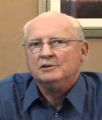INTER-REGIONAL COLLABORATION: In April 2017, the three mid Vancouver Island regional districts convened in Duncan to share their successes and challenges in protecting water resources

The Cowichan Valley Regional District hosted the Regional District of Nanaimo and Comox Valley Regional District. “As we look out into the future in a changing environment – our new normal – the richness and the depth of community participation can only help our region’s future resiliency. While we can build the tools and the technical backstops at a professional and technical level, at the end of the day we need to have everybody at the table,” stated Kate Miller.
CONVENING FOR ACTION ALONG THE EAST COAST OF VANCOUVER ISLAND: Cowichan Valley Regional District shares its successes and challenges in protecting water resources at inter-regional meeting in April 2017

For the past decade, the Cowichan Region has served as a provincial demonstration region for the whole-system, water balance approach. Methodologies and tools tested in the Cowichan Region have been replicated elsewhere. “The new normal – alternating floods and droughts – has prompted regional action to develop governance structures and processes to make the connections between high-level decision making and actions on the ground,” reported Brian Carruthers.
CONVENING FOR ACTION ALONG THE EAST COAST OF VANCOUVER ISLAND: Regional District of Nanaimo shares its successes and challenges in protecting water resources at inter-regional meeting held in April 2017

In 2008, the RDN became the first regional government to create a drinking water and watershed protection service area with taxation. In 2012, the service area was expanded to include the municipalities within the regional district. They became active participants in the watershed function. “Sharing our experience with the other regional districts will hopefully assist them as they craft their own approach within their context,” concludes Randy Alexander.
CONVENING FOR ACTION ALONG THE EAST COAST OF VANCOUVER ISLAND: Comox Valley Regional District shares its successes and challenges in protecting water resources at inter-regional meeting held in April 2017

In 2008, Comox Valley regional district restructuring opened the door to a collaborative process that led to a ‘regional team approach’. “The Comox Lake Watershed Protection Plan is presented in a format which encourages ease of implementation. The collaborative process and its positive outcome is something that the Comox Valley is proud of, and we were honoured to be asked to share the details of our process with our neighbouring regional districts,” stated Zoe Norcross-Nu’u.
2017 COMOX VALLEY ECO-ASSET SYMPOSIUM: Keynote Address by Bob Sandford on "The Hard Work of Hope: Sustaining Cooperation on Water Security & Climate Stability in a Post-Truth Trumpocene" (public presentation)

“We should also remember that – though it may not seem like it at the moment – great opportunity still very much exists not just to change the world, but to make it a better place,” stated Bob Sandford. “If we just stay the course – and by our example help others to do the same – there is no question that – if we want it to be – this could be Canada’s moment; its chance to shine.”
2017 COMOX VALLEY ECO-ASSET SYMPOSIUM: Keynote Address by Kim Stephens primed audience for workshop sessions – "What Happens on the Land Does Matter!"

The purpose of the Symposium was to build local knowledge and interest in how to apply eco-asset management principles at the local level. “Too often we talk about water and land as silos,” stated Kim Stephens in his opening remarks. “But what happens on the land does matter! It is how we respect the land that really affects what happens with water. That is a key message. It is why we are moving forward with Sustainable Watershed Systems, through Asset Management.”
2017 Comox Valley Symposium: Moving Towards "Sustainable Watershed Systems, through Asset Management" – What would eco-asset management look like in practice, on the ground, through a local government lens?

“The mandate of economics is how to allocate scarce resources to their best and highest use. Economics does not generally include nature or natural services in the discipline. The latest version of the discipline was developed in the 1930s. At that time, ecology was not a very developed discipline,” stated Michelle Molnar. “Today we recognize that nature has grown scarce, that natural resources are hitting limits, and the time is right for nature to be incorporated into economics.”
At the "Meeting of the Minds" in Parksville (Sept 2005), there was a consensus: Build a communications network to address the issues facing the water and wastewater industry within the Vancouver Island region

It was clear that there was widespread interest in holding a workshop that would provide an opportunity for the exchange of information, and to explore the possibility of establishing a communications network for the Vancouver Island Region. At the workshop, “It was agreed that the group was the start of a ‘network’ for Vancouver Island and that the overall process might be replicated in other regions throughout the Province,” reported Kerry Elfstrom.
Comox Valley Eco-Asset Symposium: “Restorative development is within your grasp. You know what to do. Go do it,” urged Bob Sandford, EPCOR Chair for Water and Climate Security, United Nations University Institute

“I travel widely, but I have never heard a conversation like what I have heard at the Symposium. And while I am often part of very positive conversations, what was unique (about the Symposium) was the atmosphere of possibilities and hope that I have witnessed here,” stated Bob Sandford. “Investment must now be shifted towards restoration that uses the forces of nature itself to help build more efficiently integrated infrastructure.”
Drainage Planning & Engineering: "We have a standard-of-practice that is generally accepted as not achieving what is best for the environment," stated Jim Dumont at the 2017 Comox Valley Eco-Asset Symposium

“So what is the nub of the issue? In standard practice, only surface runoff is considered, and this has led to degraded streams. The other pathways by which rainfall reaches streams are ignored,” explained Jim Dumont. “If communities are to truly benefit from use of nature’s assets to provide vital community infrastructure services, then we must change the engineering standard-of practice to one that reflects real-world hydrology.”

